If you’re interested in learning more about Synthetix Knowledge: For Your Customers Download our latest product sheet or get in touch with the team


If you’re interested in learning more about Synthetix Knowledge: For Your Customers Download our latest product sheet or get in touch with the team

If you’re interested in learning more about Synthetix Xan Chatbot, Download our latest product sheet or get in touch with the team

If you’re interested in learning more about Synthetix Chat, Download our latest product sheet or get in touch with the team
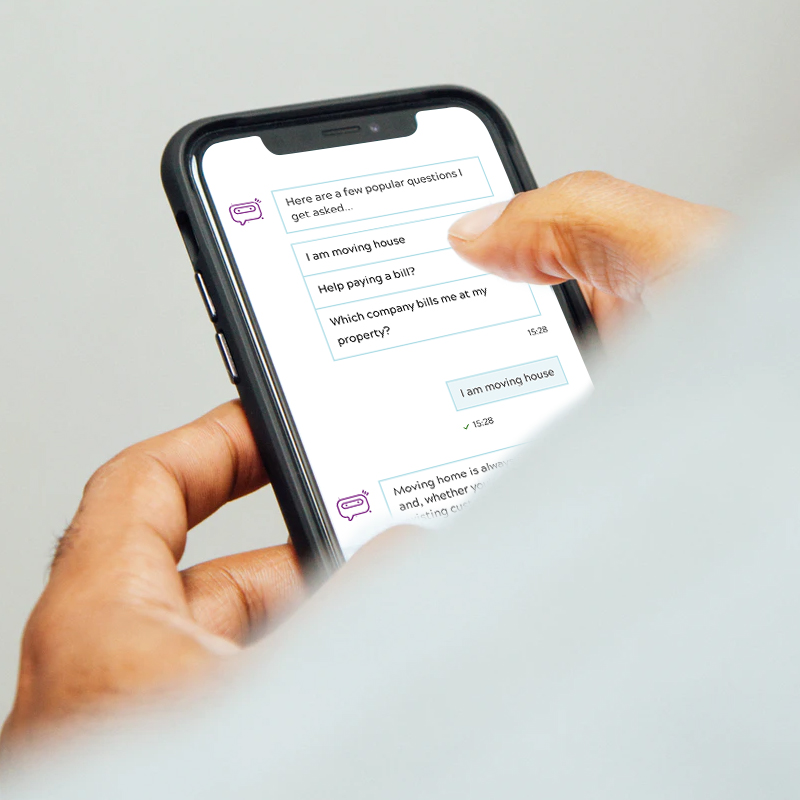
With the global chatbot market expected to reach $102.29 billion by 2026, registering a CAGR of 34.75% over the forecast period, 2021 – 2026, it’s critical that companies keep up with such CX trends and customer demands.
In this article we explore the advantages of chatbots in customer service:
Customer service chatbots are powered by AI and use sophisticated Natural Language Processing (NLP) in order to resolve users’ routine queries and tasks. Through harnessing NLP, chatbots understand user intent and can therefore serve accurate and relevant resolutions. In many ways, a chatbot takes on the role of a digital customer support agent – one that deals specifically with routine queries.
20%
Some chatbots enable Conversational Process Automation (CPA). By integrating with your core business tools, entire processes can be automated online. For instance, policy changes in the Insurance industry or meter readings in Utilities can take place completely online.
Now that these routine queries and tasks – that would otherwise reach the contact centre – can be handled through AI and totally online, support costs decrease. There is a myriad of contact centre costs associated with query handling that is reduced when a chatbot automates routine queries.
Chatbots play an important role in the wider customer service journey. Acting as a digital CX concierge, chatbots can guide users through their entire journey if necessary, resolving queries along the way and ultimately helping them reach their end goal in the smoothest, most efficient way.
Some customer service chatbots utilise intelligent decision tree technology to provide additional support to your users.
Not every user will have a query that warrants a simple, ‘one size fits all’ resolution. But not every problem must be escalated to the contact centre. This is where decision tree technology compliments customer service chatbots. They help with problem-solving common problems that often require follow-up questioning to resolve.
Managers simply map these common user journeys out using simple drag and drop systems and the entire journey is automated, providing excellent CX.
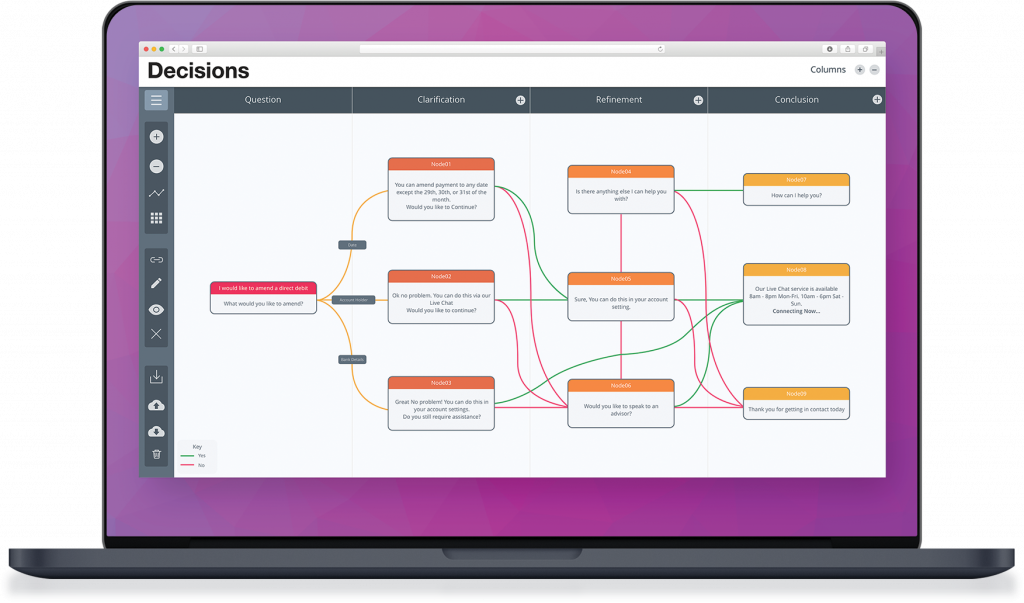
Customer service chatbots are fuelled by one main source of information – an intelligent knowledge base. This is a library of knowledge articles that powers not only your chatbot and self-service platform but also powers the interface that agents consult when dealing with customers via live chat or directly over the phone. Because your flow of information to the public is derived from one source, it means accurate and consistent resolutions are served, avoiding problems that arise when misleading or inconsistent answers are given.
Issues for your customers will arise regardless of the time of day and for your CSAT ratings, it’s critical that support is available 24/7 for those out of hours queries. Chatbots do not need to be manned or take breaks, they are available 24/7 and rely on AI to answer queries as opposed to human intelligence.
Using sophisticated NLP, Chatbots take each user query and by analysing each keyword, user intent, grammar and popularity, produce the very best, most relevant answers. Pair this will 24/7 support and chatbots are catalysts to customer satisfaction.
Chatbots that specialise in customer service include a level of customisation that, when configured correctly can increase your lead and revenue generation.
Using custom triggers, you can determine where your chatbot proactively offers users help, whether it be once they have hit a certain high-value page or when they have spent a certain amount of time on a page.
Customer service chatbots utilise sentiment analysis that helps to determine user urgency based on the keywords they use, for example, ‘cancel’ or ‘order’. These signal that help is required, lead opportunity or even revenue generation. By proactively offering assistance at those critical user touchpoints, the chances of conversions taking place significantly increases.
There will always be occasions where customers have complex questions that cannot be solved using AI alone. This is where human intelligence and understanding is required. However, what happens all too often is users interact with a company’s self-service tools to find that their query cannot be solved there. This is when they have to source agent-assisted channels, repeat the process and their query and time is wasted.
With an AI-powered customer service chatbot, users are automatically escalated to agent-assisted channels such as live chat when the chatbot detects that the query is too complex by nature for AI to solve. The escalation takes place within the same window and transcripts are transferred to avoid any user repetition taking place.
By streamlining this often onerous process, CX is enhanced and this reflects positively in customer satisfaction feedback.
Implementing a chatbot into your online offering is not only a means to improve CX and customer service but also a branding opportunity.
Some customer chatbots include additional search layers that can be customised to fit your brand personality. This is where any quirks or idiosyncrasies that match your culture and character can be configured.
It makes the customer journey more enjoyable, replacing the same boring responses whilst injecting a piece of your brand personality.
If you enjoyed this article and would like to find out how your company could benefit from customer service chatbots, you can read our guide or

A chatbot is a software application primarily used by businesses to facilitate customer service. Unlike agent-assisted contact channels such as live chat or telephone, chatbots rely on AI to resolve customer queries. The tool that enables human and machine interactions has become increasingly popular over the last decade, often acting as customers’ first online port of call, but how did the chatbot become so sought after?
The first chatbot, ELIZA was created in the 1960s before the term ‘chatbot’, or its predecessor, ‘chatterbot’ was invented. ELIZA was an advance in computer science but was not made with the intention to assist customer service.
Following ELIZA, there were several failed attempts at producing an effective chatbot including the likes of Cleverbot and Tay AI. What these bots had in common was unregulated training data; the way in which they ‘learnt’ was from the information fed to them by their users – the public – opposed to being configured by professionals using benchmarking and objectives. The result of which led to Tay AI’s termination following a spurt of offensive views it shared on Twitter.
You can read more about the history of AI bots here.
Today we are familiar with a different type of bot – the customer service chatbot. Unlike other chatbots whose purpose was simply novelty – to be played with and to provide entertainment – the chatbots we are used to today are there to provide help, automating customer queries, providing good CX and subsequently helping customer service teams.
Customer service chatbots are built on AI and through Natural Language Processing (NLP) and Machine Learning (ML) principles effectively ‘understand’ customer queries to provide adequate responses. Chatbots integrate with companies’ centralised knowledge so that depending on what query is entered, they can utilise smart algorithms to identify and serve the most relevant knowledge articles to customers.
NLP is the combination of Natural Language Understanding (NLU) and Natural Language Generation (NLG) and is constantly learning from each customer interaction to be as optimal as possible over time. NLP is responsible for unpicking the customer query, dissecting the sentence into intent-based keywords, subjects, grammatical quirks and keywords popularity to analyse, interpret and present an appropriate result.

It’s important to note that not all chatbots offered today are powered by AI, some are built on rule-based automations. Such chatbots can only respond to queries that exactly match their pre-loaded responses, leaving no room for query variations or synonyms. The result of which is “I’m sorry, I don’t understand the question. Please try again” served to customers more often than a genuine result.
This is why AI-powered customer service chatbots are so valuable to business. They are programmed to understand that there are multiple ways that a question can be asked, an array of synonyms and even idiosyncrasies. NLP helps to eradicate unhelpful responses.
Some chatbot specialists include additional layers of search for chatbots to consult if query intent is unclear. Synthetix’s system, “Jabberwocky”, for instance, unpicks query sentence structure, analysing grammar and a range of word classes. Its utilisation of proprietary NLP enables brand personality to be portrayed, increases answer accuracy and ensures that the customer always receives a conversational response.
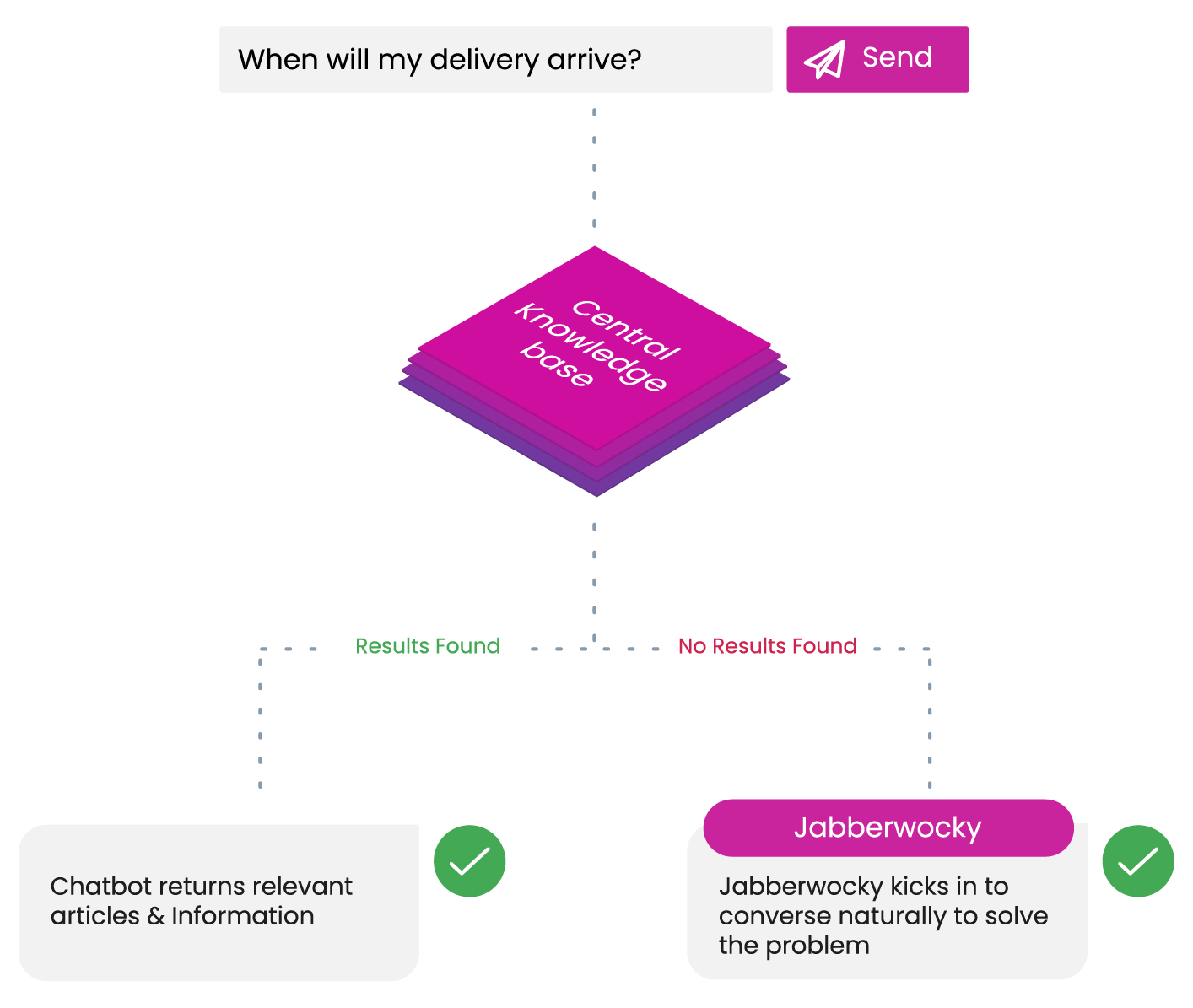
Find out about the advantages of chatbots in customer service, here.
According to IBM , chatbots in customer service can solve 80% of all routine queries – including questions such as:
Such routine questions make up a large percentage of overall contact volume, so when they are automated through AI and solved at scale, operational costs are significantly reduced. Without chatbot solutions in place, customer service teams would otherwise deal with routine queries, creating a backlog of tickets and an accumulation of overheads and staffing costs.
30%
It isn’t just the bottom line that benefits from chatbots’ capabilities to automate routine queries, agents are given a greater bandwidth in which they can deal with customer issues that are complex or sensitive by nature, rather than the same queries time and time again.
A study revealed that 64% of agents with AI chatbots are able to spend most of their time solving complex problems, compared to 50% of agents without AI chatbots. This in turn contributes to positive employee morale – their perceived quality of work is richer when the repetitive, mundane element is removed, promoting job satisfaction and therefore productivity.
Find out how chatbots are supporting agent morale and productivity, click here.
Customer service chatbots have a key role to play in customer satisfaction. Not only does NLP ensure that customers are served the very best results, encouraging improvements in First Contact Resolution (FCR) rates, but the channel itself is easy to use and convenient. Offering 24/7, real-time results, it’s a channel that customers can depend on, if for example, a chatbot provides customers critical information in an out of hours emergency, this of course is reflected in CSAT scores.
The adoption of chatbots also helps to optimise CX through Machine Learning (ML) principles and decision tree technology. ML principles enable chatbots capabilities to learn, store and utilise trends in customer behaviour, for example popular queries, colloquialisms or preferences are collected and then used for future interactions making the overall CX more enjoyable.
Effective customer service chatbots provide a smooth and enhanced customer journey through decision tree technology. To reach a successful result, an agent will usually ask customers a series of questions, but when there is no agent involved, how is this facilitated? Decision trees are configured so that chatbots can intervene at the problem-solving stage and ask such questions. This helps customers reach their destination result quickly and effectively, seamlessly transferring them to agent-assisted channels like live chat if necessary.
There are 3 types of chatbots that are commonly used in customer service, these are:
Menu-based chatbots use clickable menu buttons to help customers reach the result they require. Similar to the rule-based chatbot discussed previously in this article, this type of chatbot relies on one specific set of data and therefore cannot offer results based on anything outside of this. Although menu-based chatbots might be suitable for small businesses with super basic requirements, for instance providing answers to FAQs, they are simply not capable of answering queries more advance than this. As a result, the precision and efficiency of answers served suffer.
Read: The 8 Biggest Chatbot Mistakes That Are Costing You Money
Keyword recognition-based chatbots utilise AI, isolating and analysing each keyword to determine the best results. With each query that is entered, this type of chatbot will concentrate on the keywords that warrant action, for example “order”, “account”, “payment” and verb word classes such as “setup”, “cancel”, “refund” to piece together the most suitable response for the question at hand. Keyword recognition-based chatbots, however, are not effective at recognising multiple variations of questions.
Contextual chatbots utilise both AI and ML principles, proving particularly valuable to customer service amongst a multitude of companies. This chatbot type learns and stores useful information to utilise in future conversations. By remembering certain customer preferences and behaviours, conversations with the same customer during different sessions are of optimal efficiency and CX. A large portion of time can be saved if the bot simply asks the customer if their preferences are the same this time around, opposed to carrying out the same question process time and time again.
In customer service, chatbots are not only an expectation but they can assist teams quite significantly whilst complimenting companies’ overall customer service toolkits. As chatbots are more widely accepted and businesses understand the importance of AI-powered tools, we can only expect bigger, more impressive things for the bots of customer service.
If you’d like to know more about the benefits of conversational chatbots, click here.
If you enjoyed this article and would like to find out more about chatbots,
you can do so here . Or, if you’d like any chatbot advice or help with your organisational needs, please

A report conducted by the Institute of Customer Service that surveyed 10,000 people revealed that the number of complaints regarding poor customer service in the last six months was at its highest level since 2009.
It was also revealed that customers believe that companies too often use COVID as an excuse for the poor service they received.

Customers were empathetic and patient towards the disrupted level of service in which they received during the first 6 months of COVID. But fast forward a year – that’s a year to adapt, plan, fail, try again and improve – and the blanket excuse, “because of COVID…” no longer cuts it.
It exacerbates the frustration that customers are already feeling. With the lockdown restrictions easing this week, they’re (quite understandably) fed up of hearing that excuse, leading CSAT scores to suffer.
Since the beginning of the pandemic, many companies have had time to adapt and even thrive when it comes to a new era of CX. Whether it’s remote working, new technologies or improved processes, a multitude of businesses has successfully adapted and through digital transformation, are more efficient than pre-COVID times.
So where have these companies found their online customer service wins?
Customers want to be able to access your help articles and agent assistance from a range of channels. When they’re on the go or working from a specific device, sometimes navigating to a company’s support page, entering a query and browsing articles isn’t convenient.
Companies that offer multichannel customer support online are thriving when it comes to CX and satisfaction. Giving customers the choice as to how and where they access help is critical.
For instance, a majority of customers’ online journeys begin with the search engine. By fuelling your FAQs with an SEO Knowledge Base, you not only help provide the best answers quickly but by streamlining the user journey, save costs and boost CSAT.
Similarly, by offering live chat options via popular social and instant messaging channels, a customer’s journey is significantly more efficient and successful.
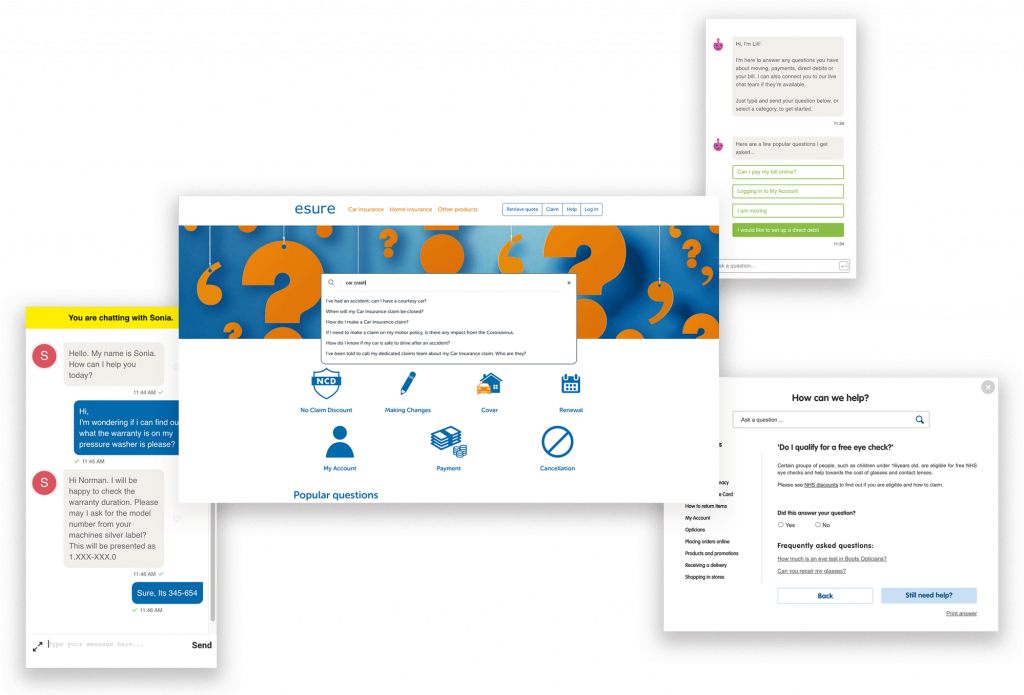
Companies that are thriving when it comes to customer service, offer their users a blend of self-service and agent-assisted contact options that are fuelled by the same knowledge base and frictionlessly escalate when necessary.
Offering self-service tools such as an FAQ page, FAQ widget or a chatbot reduces contact levels to the contact centre not because routine queries have been aggressively deflected, but because users have learnt how easy and convenient it is to self-serve.
For optimal CX, ensure your customer service platform includes seamless escalation between channels. If a self-service tool cannot deal with a query due to its complexity, it’s important to the user journey that an escalation to an agent-assisted channel such as live chat or the contact centre is available. This negates the need for customer repetition and streamlines their journey.
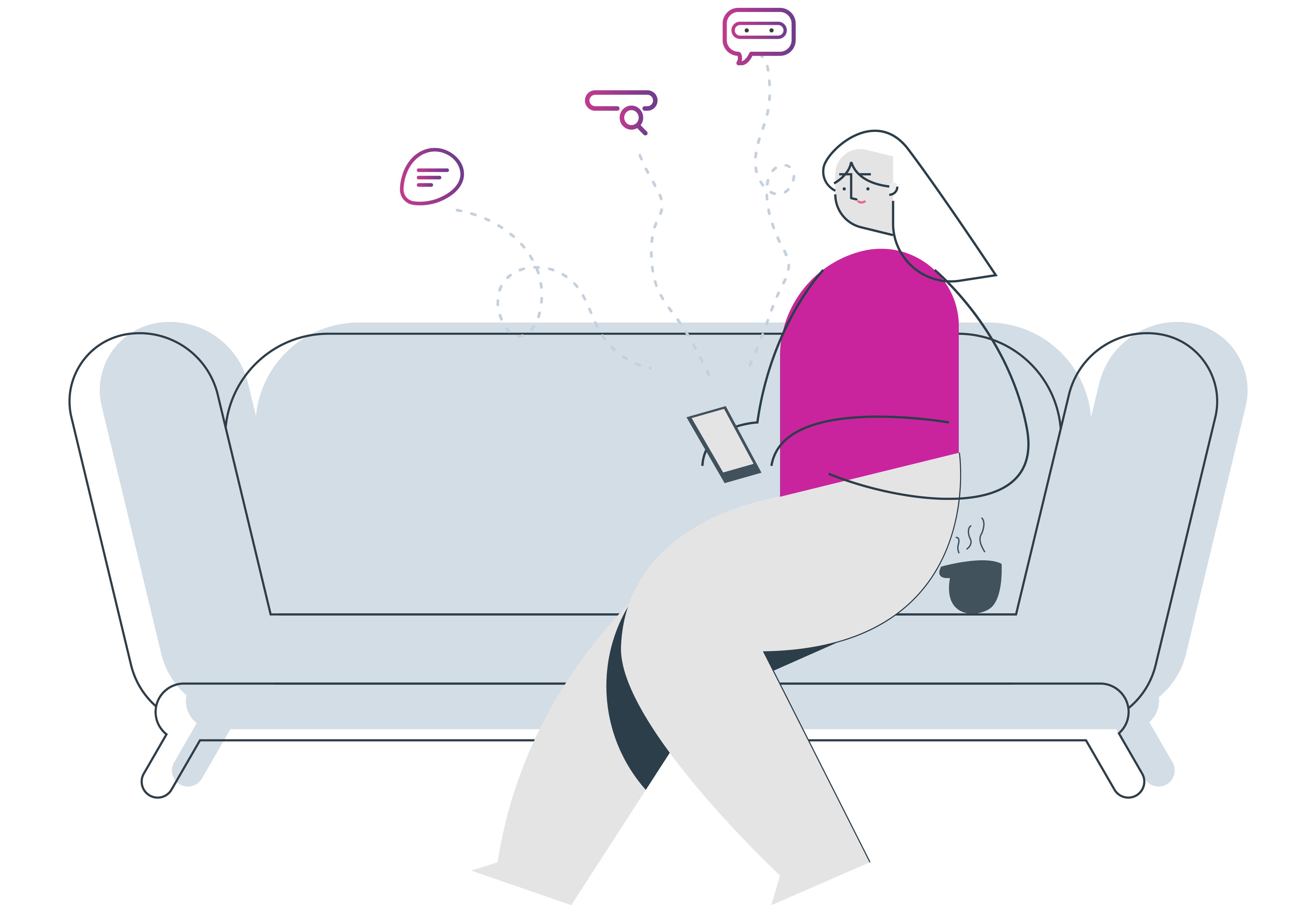
The global conversational AI market is expected to grow from $4.8 billion in 2020 to $13.9 billion by 2025, at a CAGR of 21.9% during the forecast period.
The increased demand for conversational AI technology such as chatbots is fuelled not only by its capability to automate routine queries and processes, significantly reducing contact and therefore support costs but also customer preference.
Whilst most customers understand they are not speaking with an actual human, the human touch that is provided by conversational AI and chatbots enhances CX as they are guided through their journey.
Powerful Natural Language Processing (NLP) unravels each of your users’ questions, analysing keywords, intent, grammar and popularity to ensure the best, most relevant results are provided. Sophisticated search layers can then be configured to add elements of your brand personality.
Since the height of the pandemic in 2020, companies have had time to plan, recoup and improve their customer service operations. It is therefore no wonder that customers are frustrated to hear COVID still being used as an excuse for poor service today.
However, for the many companies that are thriving, adaptability and new technologies are key. Utilising CX software that offers customers a range of channels, has a blend of self-service and agent-assisted tools and adopts conversational AI has proven fundamental for customer service success.
If you would like to find out more about customer service software that has helped companies thrive

The pandemic has impacted the way in which every business operates. As the only line of communication between companies and their customers, online CX in particular has never been more vital. Here, we discuss what CX will look like post-pandemic, and if it will ever be the same.
When COVID-19 became a pandemic during 2020, the nation was told to stay at home, which involved working from home, ordering groceries online and communicating with companies digitally.
Nipping to the shops for a ‘non-essential’ item or popping into the building society were no longer options. This led to drastic and accelerated changes in customer behaviour fuelled by uncertainty. Companies experienced huge influxes of contact, on average a 20% increase, although some businesses, including supermarkets and on-demand groceries saw up to 130% increase in contact volumes.
Unprepared for the sudden crisis, companies, who now had far fewer opportunities for face-to-face, in-store experiences with customers had to adapt fast.
Not only were agents, like the rest of the world, adjusting to working from home conditions, but a surge in contact meant that companies had to employ many more agents to keep up with the volumes. Training and upskilling were major obstacles that companies faced as a result of the pandemic.
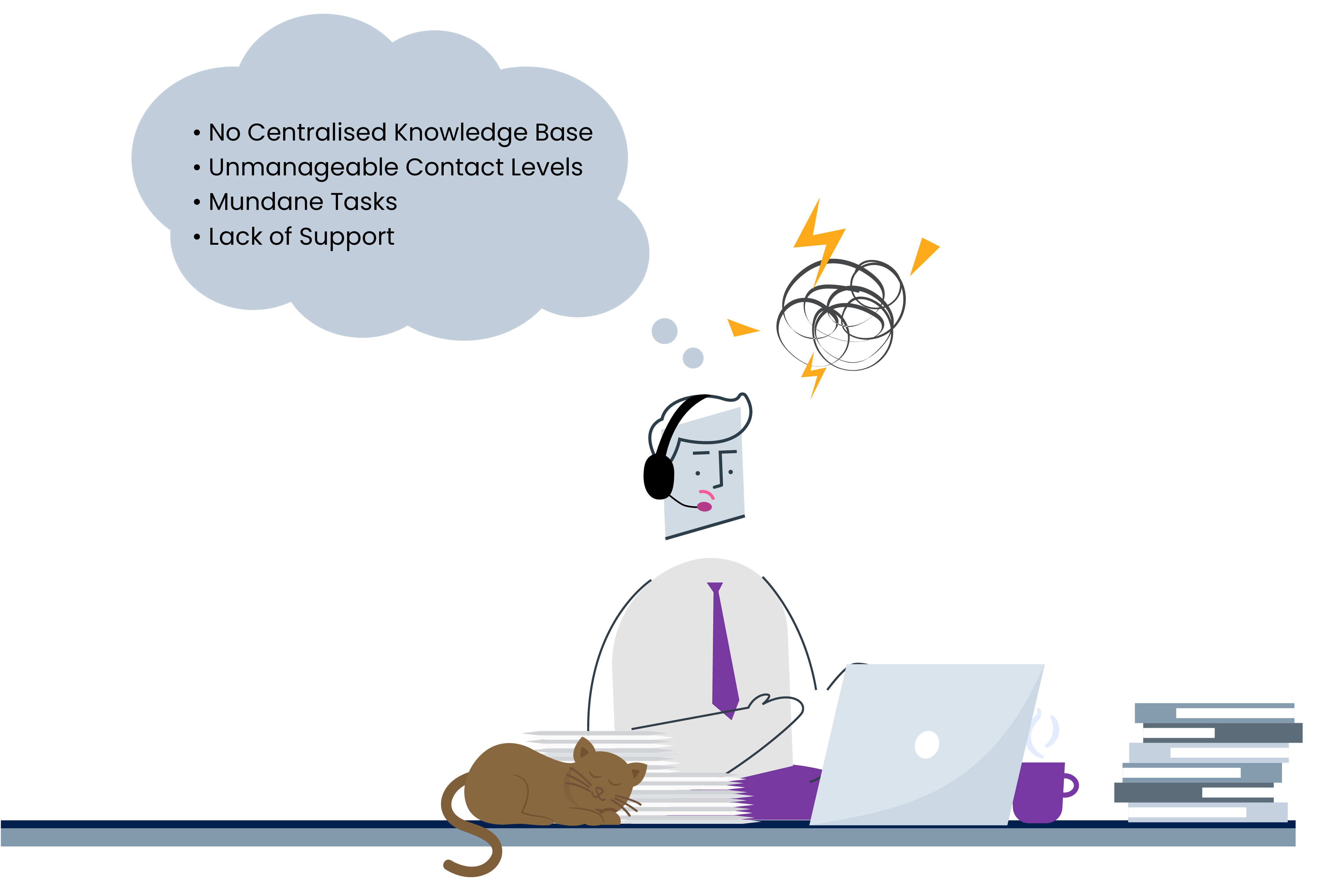
Companies that did not offer digital contact channels adopted them quickly in order to satisfy the surge in contact volume reaching contact centres, deflecting queries that could be automated, but also to cater to generation groups that were not accustomed to online experiences. Many companies had to reconsider their entire CX offering during 2020 as a direct result of COVID-19.
We can’t predict the future, however, if 2020 has taught us anything it is that being prepared, agile and adaptable is fundamental in terms of survival and growth.
This of course relies on knowing whether things will stick or revert to pre-pandemic CX. We have drawn a number of conclusions as to how CX will look for both your team and customers post-pandemic.
A significant change driven by the pandemic that has affected most of the population includes the way in which we work, with millions of us advised to work from home when possible. Whether we like it or lump it, these changes – to a certain degree – are likely permanent.
Albeit some initial scepticism, both companies and employees began seeing the benefits of working from home. A survey of just under 1,000 firms by the Institute of Directors (IoD) shows that 74% plan on maintaining the increase in home working.
The same survey found that 50 of the biggest UK employers had no plans to return all staff to the office full-time in the near future.
As the backbone of CX, it is important that your customer service teams and agents are fully supported in their working environment, whether that be working from home, flexi-working or in the contact centre – when this is possible. This includes their WFH conditions, wellbeing and tools you provide.
Whether your agents and highly experienced or in training, they need cloud-based, reliable and intuitive tools that make fulfilling their jobs simple.
Customer behaviour has rapidly evolved throughout the pandemic, with CX stakes high and companies responding to new customer demands, a faultless, smooth and successful online customer experience is a minimum expectation.
Many have become accustomed to online grocery shopping, digital appointments and virtual meetings. For many sectors digital is the now new norm; with the likes of pioneer retailers such as Topshop being purchased by online retail giant ASOS – will the convenience of buying online stick?
According to one study half of customers say that customer experience is more important to them now compared to a year ago.
With a rapidly accelerated digital timeline and expectations for far greater online experiences, companies must be able to keep up with demand, providing customers with smooth, efficient and successful journeys on every session.
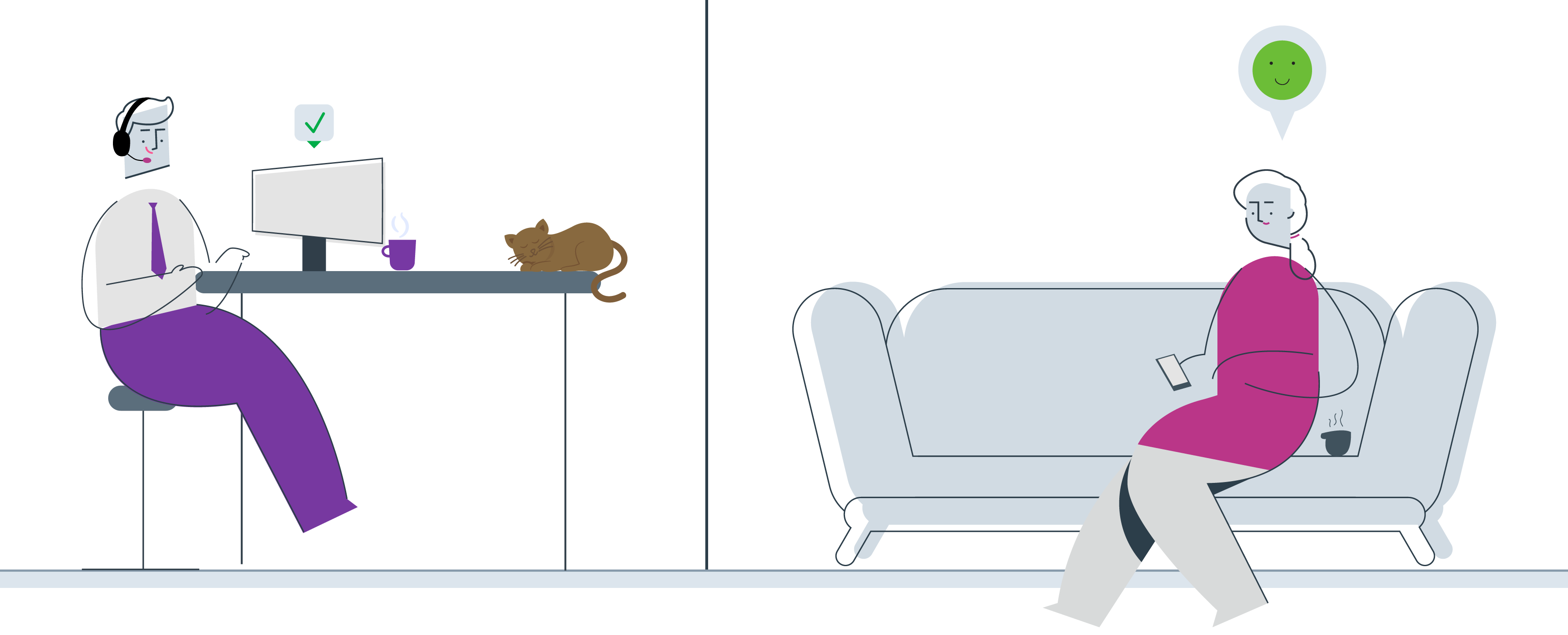
Agility is key in times of uncertainly. We can never be sure when a crisis will hit, so being able to adapt fast is fundamental.
Ensure that the software you choose to support your agents includes:
During the pandemic, 68% of agents felt overwhelmed , companies must be proactive and equip them with knowledge tools that give them confidence.
As CX becomes a major area of investment – with 63% of CX managers prioritising it more than during 2019 – it’s important that companies get their tools right.
Consider CX software that:
Whilst we cannot be sure what post-pandemic CX will look like exactly, we know that it is likely that remote working is here to stay. We know that CX is more important than ever and that companies are responding to this. In order to satisfy your employees, operations and customers, it is paramount that the software you choose is capable of supporting flexi-working and excellent CX.
To find out more about CX software that includes what we have discussed in this article, please get in touch with Synthetix.

Live chat is an online contact channel that allows your customers to speak directly with your company representatives. Most commonly used to facilitate customer support, it can also assist in lead and revenue generation activities.
Unlike other online customer service channels such as self-service portals or chatbots that rely on AI to generate results to routine queries, live chat utilises human agents. This, therefore, makes live chat the perfect support channel for dealing with non-routine queries that are complex and require a level of human understanding and emotion.
Live chat software has been around since the 1970s when Illinois University introduced PLATO, followed by the explosion of instant messaging platforms in the 1990s. But today, live chat is multifaceted and quickly becoming customers preferred method of communication.

First-generation live chat software, PLATO was used at Illinois University in 1973.
With the global live chat market rapidly growing at a CAGR of 7.5% from 2017 to 2023 , it’s no wonder that it’s replacing traditional agent-assisted contact channels like telephony.
So, why is online live chat quickly replacing telephony:
When it comes to handling individual queries in the most cost-efficient way, live chat is the clear frontrunner.

When a customer rings into the contact centre for help, the agent that answers is only physically capable of dealing with that individual – they cannot multitask or speak to multiple customers at once.
Whilst it’s not feasible to have more than 1 verbal conversation at once, live chat provides the tools enabling agents to handle multiple customer queries simultaneously. When we take into consideration the accumulation of costs associated with handling a query, live chat proves significantly cheaper as a contact channel, bringing contact centre overheads down considerably.
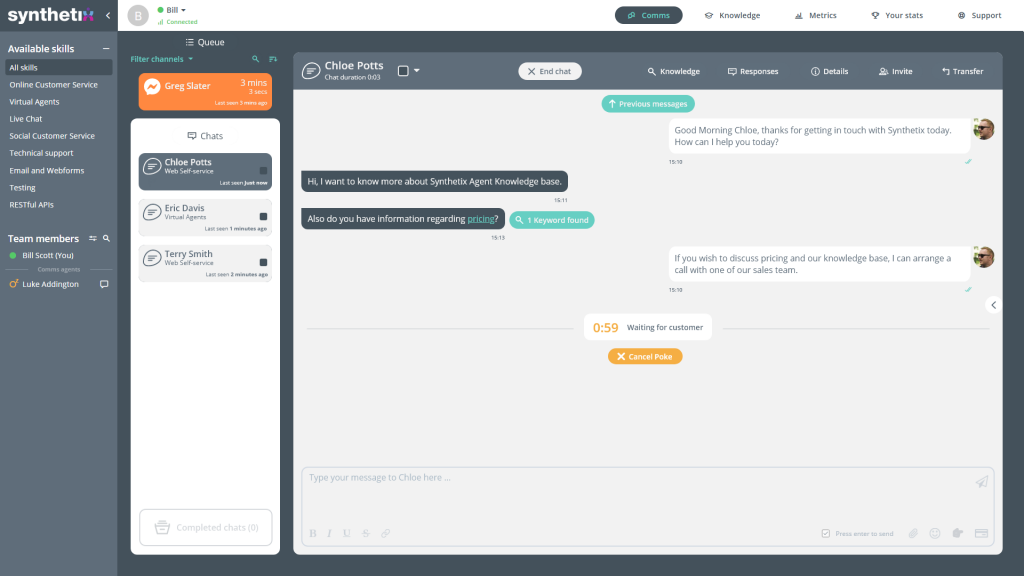
Your customers are used to doing virtually everything online today, whether it’s banking, booking medical appointments or even grocery shopping. These expectations don’t stop when it comes to customer service, your customers not only expect to have their queries resolved entirely online, but they prefer it. 79% of customers in fact said their preferred contact channel was live chat – the most popular reason being its instant responses.
Customers love using online live chat because it offers them the convenience and ease-of-use of a digital channel, paired with the personability and depth of knowledge available with having a 1-to-1 conversation with a skilled agent.
Live chat embodies all the benefits of telephony but with quicker, more available access.
To learn more about why customers prefer live chat, click here.
Online live chat includes a number of integrated features that boost agent productivity that telephony does not.
Within the chat console, agents have access to an integrated knowledge base that provides AI-predictive suggestions. This is a library made up of thousands of knowledge articles, available at their fingertips without having the switch in between tabs, browser or windows. Chat interfaces that utilise Natural Language Processing (NLP) significantly speed up Average Handling Times (AHT), making for a better customer and employee experience. NLP unpicks the customer query on every keypress, analysing every keyword to determine search intent, offering relevant results in the same window. The agent simply clicks to copy the whole or a section of the knowledge article and pastes it into the conversation.
Some online live chat vendors include a live keypress feed within the agent interface. By providing the agent with a preview of what is being typed from the customer’s side on each keypress, an entire resolution can be built, often before the customer hits send. Not only does this reduce AHT but contributes to a great customer experience.
Unlike telephony, which requires significant manual auditing, for example, logging a call and the customer’s details and queries, live chat which is solely digital, automates these tasks and processes. For example:
Whilst telephony is a reactive form of customer support; it responds to customers needs once an issue has already occurred, live chat is proactive.
Using custom triggers, live chat can be configured to fire under certain conditions, intercepting the customer and helping them to their intended destination. For instance, when a visitor has spent a certain amount of time on a page such as a product page or cart page it could indicate that they need help before buying. When live chat is configured to trigger under these conditions, you are proactively offering assistance which could be the difference between cart abandonment and a sale.
Triggering live chat proactively in this way can also answer queries that avoid product refunds, returns and complaints, saving you money.
Whilst call centres generally aren’t open 24/7, live chat can still offer out of hours support with the help of an AI-powered chatbot.
Through seamless integration, facilitated by open RESTful APIs, chatbots take the reins from live chat when there are no agents available. Whilst the customer won’t be speaking with a human, chatbots that are powered by AI harness NLP and this means that a huge range of routine queries can be dealt with.
So, rather than a customer reaching a support page with no options, they are met by a chatbot that can offer help or record their details to pass on to an agent if the query is too complex – a far greater CX.
While remote working was already on the rise before the COVID-19 crisis, the practice has further been catalysed through necessity. It is predicted that remote working will stick for many companies, with 98% of employees agreeing they would like to continue with some form of remote working for the rest of their career – this includes contact centre and customer support employees.
If working from home is the new norm then online live chat conquers telephony for a number of reasons:
Whilst we are not there yet, it is possible that in the future live chat will replace telephony indefinitely. But for now, audiences still require a blend of digital and human customer service experiences. This is why omnichannel support is critical. Customers want the option to contact you how they want, whether it’s online live chat social media, WhatsApp or self-service.
For optimal CX, consider a customer service provider that offers omnichannel support for your customers.
If you enjoyed this article and would like to find out more about live chat, you can read more here or for help selecting live chat software and advice

Live chat, as a customer support, sales and marketing tool has experienced huge growth in recent years. With businesses of all sizes adopting the customer service channel, the live chat market is estimated to reach $997 million by 2023, registering a CAGR of 7.5% from 2017 to 2023.
Not only does live chat offer a quick and convenient means of direct communication for your customers, providing them with great CX but it proves particularly cost-efficient for businesses compared to other agent-assisted channels.
Telephone and email, for example, channels that include long handling times and asynchronous sessions prove costly. Live chat on the other hand brings support costs down significantly by offering multiple simultaneous chat options and a range of features that improve agent productivity.
Not only is live chat the preferred agent-assisted channel when it comes to reducing costs, but for customers – 79% in fact – live chat is their go-to tool for solving issues.
When asked why live chat was their preferred contact channel, customers’ top answer surrounded its capability to respond instantly.
Alternative agent-assisted contact channels like telephony usually include long wait times, being put on hold and transferred from department to department. For customers, this creates discomfort and frustration – it unnecessarily dominates a chunk of their day and feels like a waste of time.
Similarly, for customers, email as a communication channel feel disjointed – waiting days for a reply to the first of what might be 5 follow up queries simply isn’t realistic, nor does it reflect positively on customer reviews or CSAT ratings.
Live chat’s ability to deal with multiple customer queries at once means that agent time can be utilised far more effectively than other channels. It means that wait times are minimal, reducing Average Handling Times (AHT) and as a result, boosting CSAT scores.
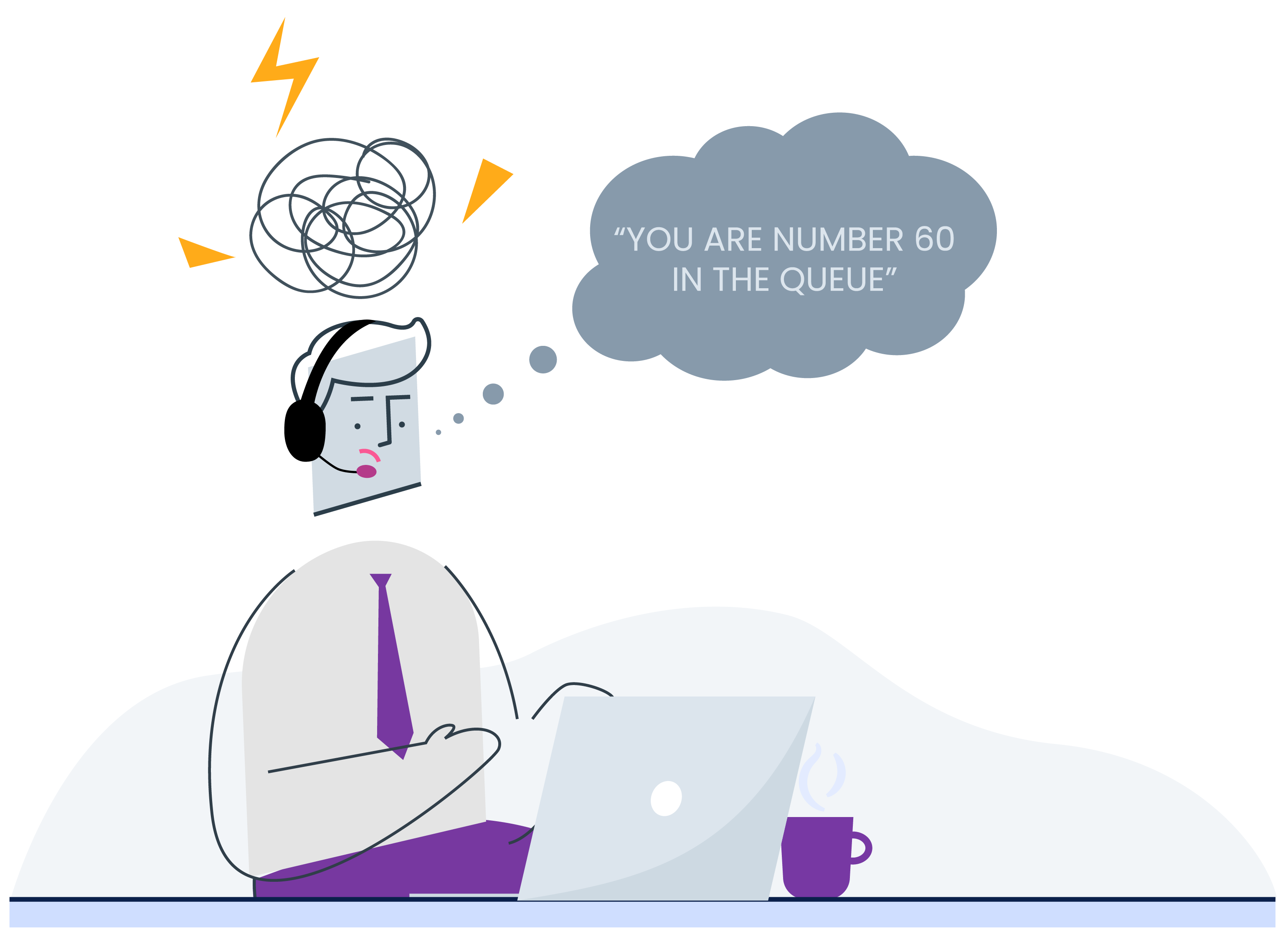
Get it right by:
Selecting a live chat vendor that offer multiple chat capabilities and live keypress feed – this allows agents to prepare a resolution often before the customer has hit ‘send’, producing instant responses.
With instant messaging platforms and social media chat usage significantly increasing amongst your customers, it is no wonder that live chat proves so popular as a contact channel.
Not only do customers use messaging interfaces every day as a way of keeping in contact with others, but generation such as Millenials and Gen Z, who have either grown up using instant messaging or know no different expect such interfaces when engaging companies.
When live chat software includes features such as emojis and chat ‘history’ (chat transcripts) on a familiar, mobile-friendly, 2-way chat interface, it builds comfort and positive brand associations with your company, which in turns enhances CX.
Customers love live chat because it offers the familiarity and convenience of a digital messaging app, whilst serving them the depth of knowledge associated with an agent-assisted channel.
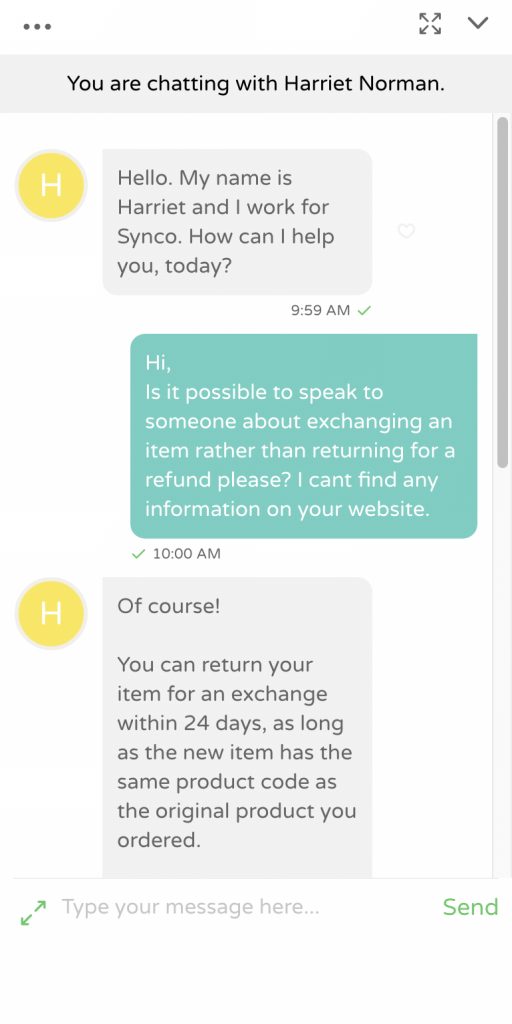
Get it right by:
Ensuring that the vendor you choose offers mobile friendly live chat and customisable branding options.
When a customer has a non-routine or complicated query that needs resolving, they no longer have to pick up the phone and wait in the queue for assistance from a trained agent – the query can be solved entirely online.
This is how a customer’s query is intuitively and quickly resolved through live chat:
Because your agents are equipped with a knowledge base full of information and resolutions that are automatically generated for them via AI, there is no need for the customer to pick up the phone, creating a smooth and efficient journey.
Learn more about how a knowledge base live chat integration, here.
Get it right by:
Choosing live chat software that is built using AI and harnesses powerful Natural Language Processing (NLP) to offer agents AI-predictive suggestions.
When it comes to offering customers a great experience and satisfying their customer support needs, time is an important factor.
Telephone and email as contact channels are renowned for long wait times and often unpleasant experiences. As your customers’ lifestyles become busier and time becomes more precious, it is no wonder that such contact channels are no longer suiting their needs.
The mechanics of live chat on the other hand means that your customers can continue their everyday tasks whilst engaging with an agent and having their issues resolved. Customers can interact with agents from anywhere, whether it’s a busy outdoor space or noisy area.
Unlike telephony, the format of live chat doesn’t warrant an instant response which allows customers to multitask whilst they communicate with agents. If an agent hasn’t heard back from a customer after a certain amount of time, they can send a “poke”. This prompts the customer, asking if they’d like to continue, otherwise the session will be closed.
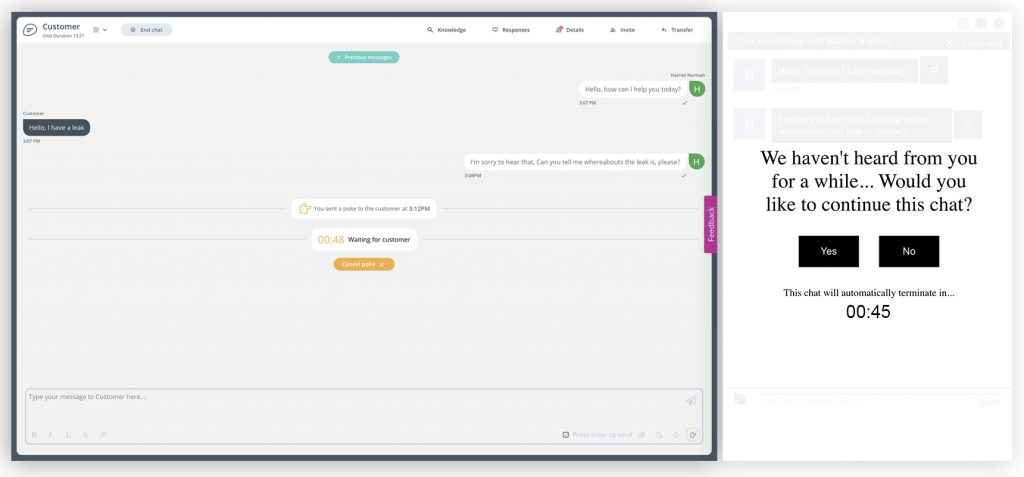
Get it right by:
Selecting live chat software that utilises low code; let your customers benefit from convenient online channels as soon as is possible.
Customers love the multiple ways in which they can engage with your live chat agents. Whether its through their favourite social media platform, instant messaging service or directly through your site, it’s easy and the choice is theirs.
Live chat software integrates with the likes of Facebook Messenger and WhatsApp so that customers can get help with support or purchases quickly and from any device. With the utilisation of APIs, agents can see all chats within the same interface, regardless of their origin and handle them accordingly.
So, whether your customers engage with your live chat tool as a result of finding you on Google search, being escalated from a self-service channel or through social media, getting help is straightforward.
Get it right by:
Choosing live chat software that includes seamless escalation options and multichannel integration capabilities.
If you enjoyed this article and would like to know more about live chat, read our guide here or if you would like any assistance with software and implementation, please